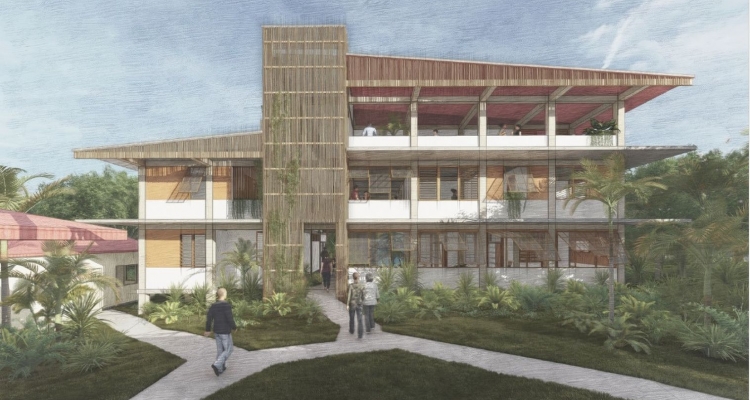Residential Interior Architect: Transforming Your Interior Spaces into Works of Art
Residential Interior Architect: Transforming Your Interior Spaces into Works of Art
Blog Article
Leading Trends in Residential Architecture You Need To Learn About
As property style remains to evolve, numerous engaging fads are forming the method we develop and populate our living rooms. Key growths such as sustainable building methods, the combination of wise home innovation, and the rise of modular homes emphasize a considerable shift towards both functionality and environmental responsibility. Additionally, concepts like open strategy living and biophilic design are redefining our communication with room and nature. Comprehending these fads not just educates layout selections but likewise exposes broader effects for way of living and community - residential house architect. What might these advancements indicate for the future of domestic living?
Sustainable Structure Practices
An enhancing variety of domestic tasks are accepting lasting structure methods, driven by a growing recognition of ecological impact and energy efficiency. This shift is defined by the integration of environmentally friendly materials, energy-efficient designs, and ingenious building and construction techniques. House owners and contractors are significantly prioritizing making use of sustainable sources, such as bamboo and recycled steels, which not just reduce the carbon footprint however also boost the resilience and visual allure of properties.
Including energy-efficient systems is another crucial element of lasting building - residential house architect. Functions such as high-performance insulation, energy-efficient home windows, and photovoltaic panels are coming to be standard in brand-new property designs. These aspects not just add to lower energy consumption however additionally give considerable long-term savings for property owners
Additionally, the format of sustainable homes usually stresses all-natural light and ventilation, minimizing the reliance on synthetic lighting and environment control systems. Landscape design practices, such as xeriscaping, additional advertise sustainability by reducing water usage.
As the need for lasting living services proceeds to increase, the property architecture market is positioned to adapt and innovate, guaranteeing that future homes are not just ecologically accountable but additionally comfy and functional for their residents. - residential house architect
Smart Home Technology
Smart home technology is reinventing the method property owners engage with their living areas, improving power, security, and convenience monitoring. This cutting-edge technique incorporates different devices and systems, permitting customers to control their homes from another location or with automated processes. Central to this trend is the usage of wise tools such as thermostats, illumination, safety and security video cameras, and appliances, all connected via the Internet of Points (IoT)
Among one of the most appealing functions of clever home technology is the capacity to customize settings for ideal energy effectiveness. Homeowners can monitor power usage and adjust illumination, cooling, and heating based on their routines, dramatically lowering energy costs. Sophisticated protection systems equipped with wise locks and security cams supply tranquility of mind, allowing remote tracking and informs to potential safety violations.
Integration with voice-activated assistants boosts customer experience, permitting house owners to control tools with easy voice commands. As modern technology remains to evolve, the capacity for clever home systems to boost top quality of life expands, making them a necessary factor to consider in modern domestic architecture. Inevitably, clever home innovation is not simply a trend yet a basic shift towards more smart living settings.
Open Concept Living
Open up principle living has emerged as a specifying function in contemporary residential design, defined by the elimination of conventional obstacles in between spaces. This style approach advertises fluidness and connection within the home, enabling for a seamless transition in between areas such as the kitchen area, dining, and living rooms. By removing walls useful content and dividings, open principle layouts produce a feeling of spaciousness, cultivating an inviting environment that improves social communication.

Furthermore, this method to domestic design straightens with minimalism, concentrating on useful simpleness and visual coherence. House owners value the convenience of these designs, which can be conveniently adapted to reflect personal style through furnishings setup and design. As open concept living continues to obtain traction, it remains a testament to progressing family members characteristics and the need for homes that improve link and comfort.
Biophilic Layout
Biophilic style has actually come to be increasingly considerable in property design, stressing the intrinsic link in between people and nature. This style viewpoint looks for to incorporate natural elements right into living rooms, consequently fostering a sense of health and enhancing the quality of life for passengers. By including functions such as natural light, greenery, and natural products, biophilic design promotes an unified relationship in between indoor settings and the all-natural world.
Crucial element of biophilic design consist of big windows that offer unobstructed views of exterior landscapes, living wall surfaces that present greenery right into interiors, and open flooring plans that urge air movement and natural light penetration. Water features, both within and outside the home, serve to produce comforting environments and improve sensory experiences.
In addition, making use of sustainable products not only click here for info supports ecological stewardship yet also adds to much healthier interior air top quality. As understanding of environmental issues rises, property owners are significantly focusing on styles that show their link to nature. Essentially, biophilic style not just raises aesthetic allure however likewise addresses psychological and emotional needs, making it a vital fad in contemporary residential style.
Modular and Prefab Residences

Moreover, modular and prefab homes are designed with sustainability in mind. Several manufacturers use energy-efficient systems and environment-friendly materials, such as solar panels and advanced insulation techniques, adding to reduced energy consumption and reduced energy costs for property owners. The versatility of design alternatives permits for modification, dealing with varied functional requirements and visual preferences.
As the demand for economical real estate remains to rise, prefab and modular homes present a feasible remedy, resolving both financial and environmental difficulties. Communities are progressively acknowledging the potential of these structures, integrating them into country and city settings. Overall, the pattern towards prefab and modular homes signifies a change toward much more lasting, efficient, and adaptable living settings, making them a critical element of modern household style.
Final Thought
In conclusion, the progressing landscape of property architecture showcases substantial fads that focus on sustainability, wellness, and technology. Sustainable building techniques and clever home technologies enhance performance and benefit, while open idea living and biophilic design foster social interaction and a link to nature. Moreover, the increase of prefab and modular homes supplies adjustable and affordable remedies, showing a more comprehensive shift towards functional and liable living. These trends collectively highlight a dedication to developing unified and innovative domestic settings.
Secret growths such as sustainable building practices, the integration of wise home innovation, and the surge of modular homes emphasize a substantial shift in the direction of both functionality and ecological duty.The surge of prefab and modular homes has changed the residential design landscape, using ingenious options for reliable and lasting living.Additionally, prefab and modular homes are developed with sustainability in mind. Generally, the fad towards prefab and modular homes represents a change towards more sustainable, visit their website reliable, and versatile living atmospheres, making them a pivotal facet of modern property style.
Lasting building techniques and wise home technologies boost effectiveness and ease, while open idea living and biophilic style foster social interaction and a link to nature.
Report this page